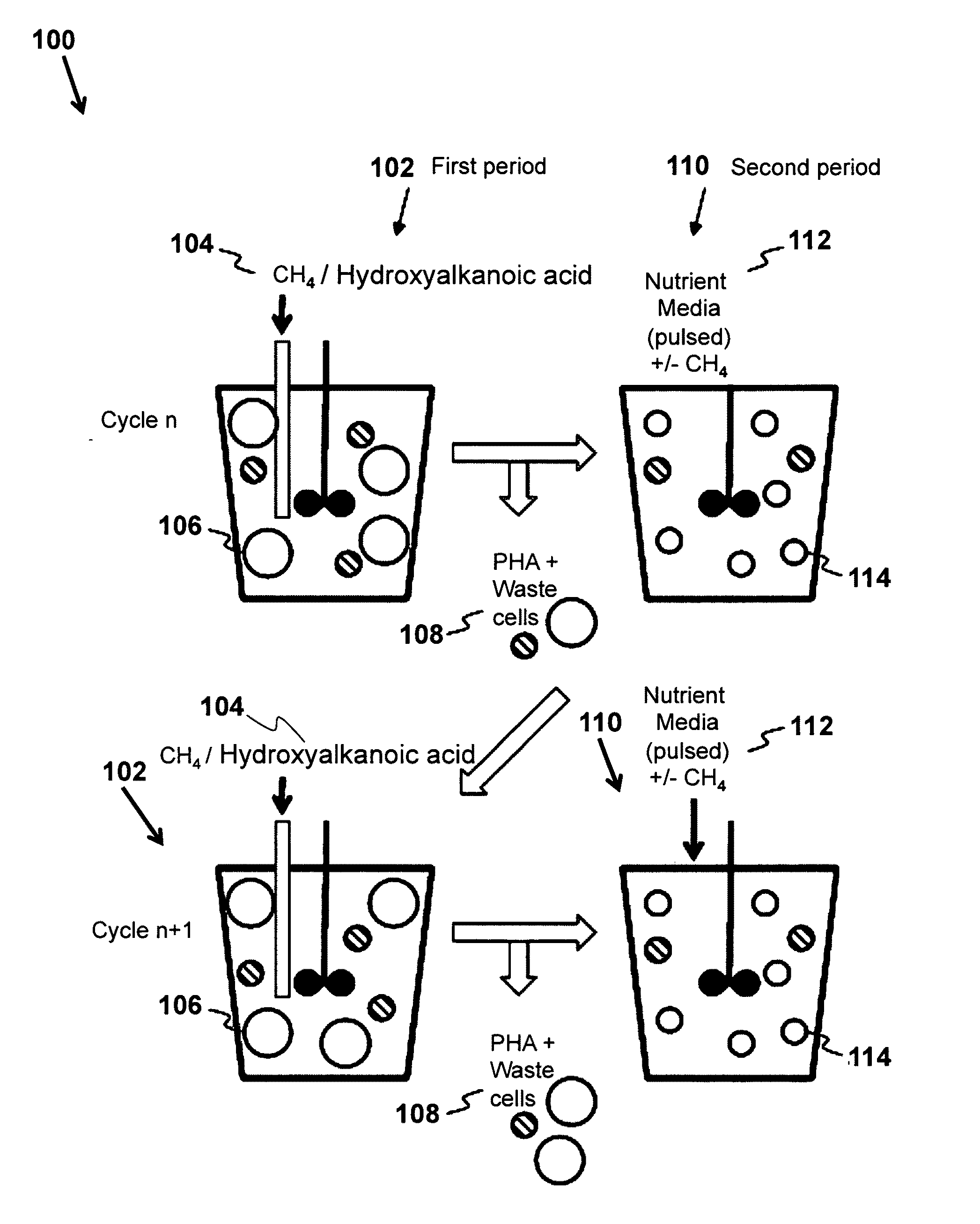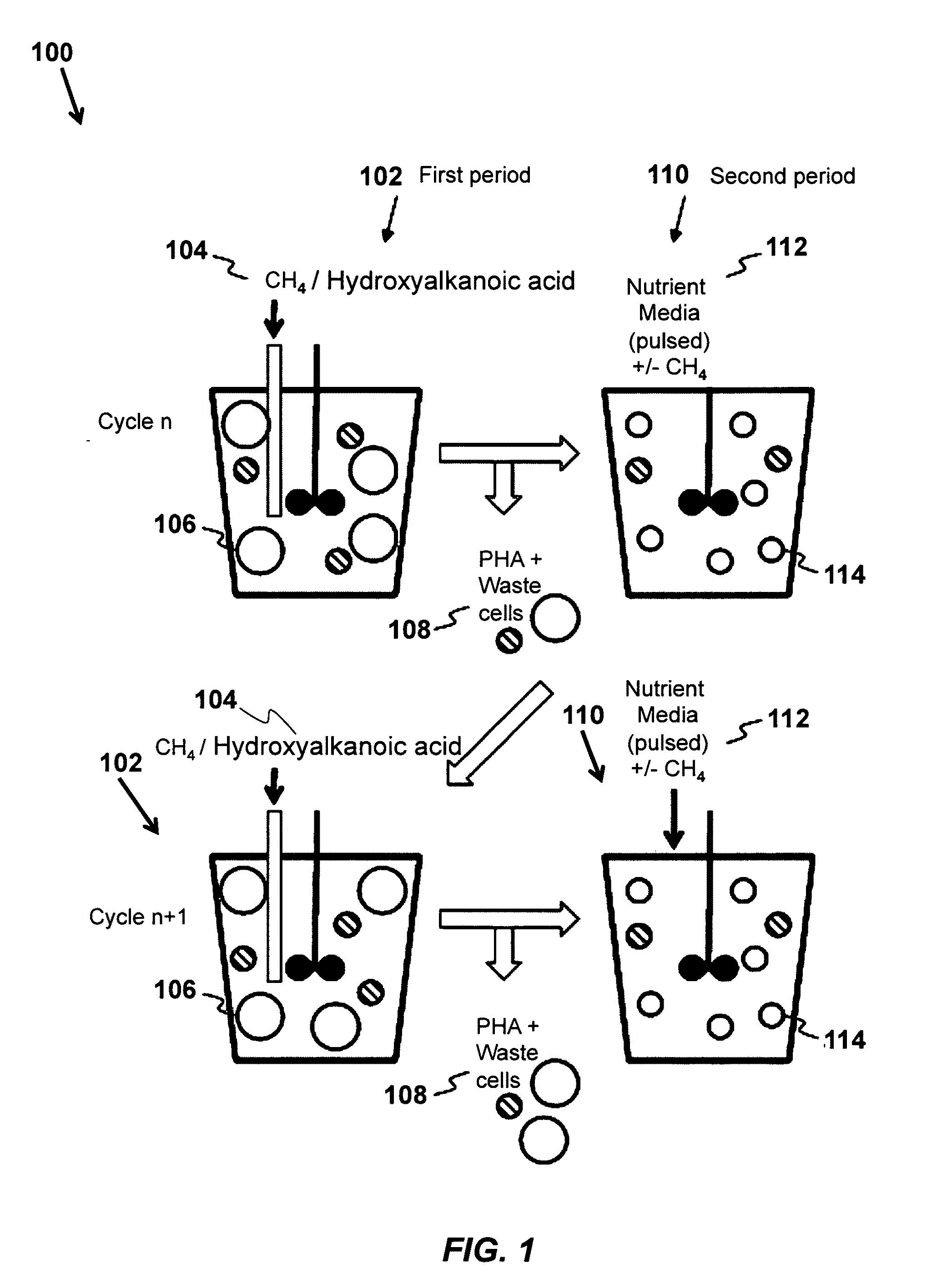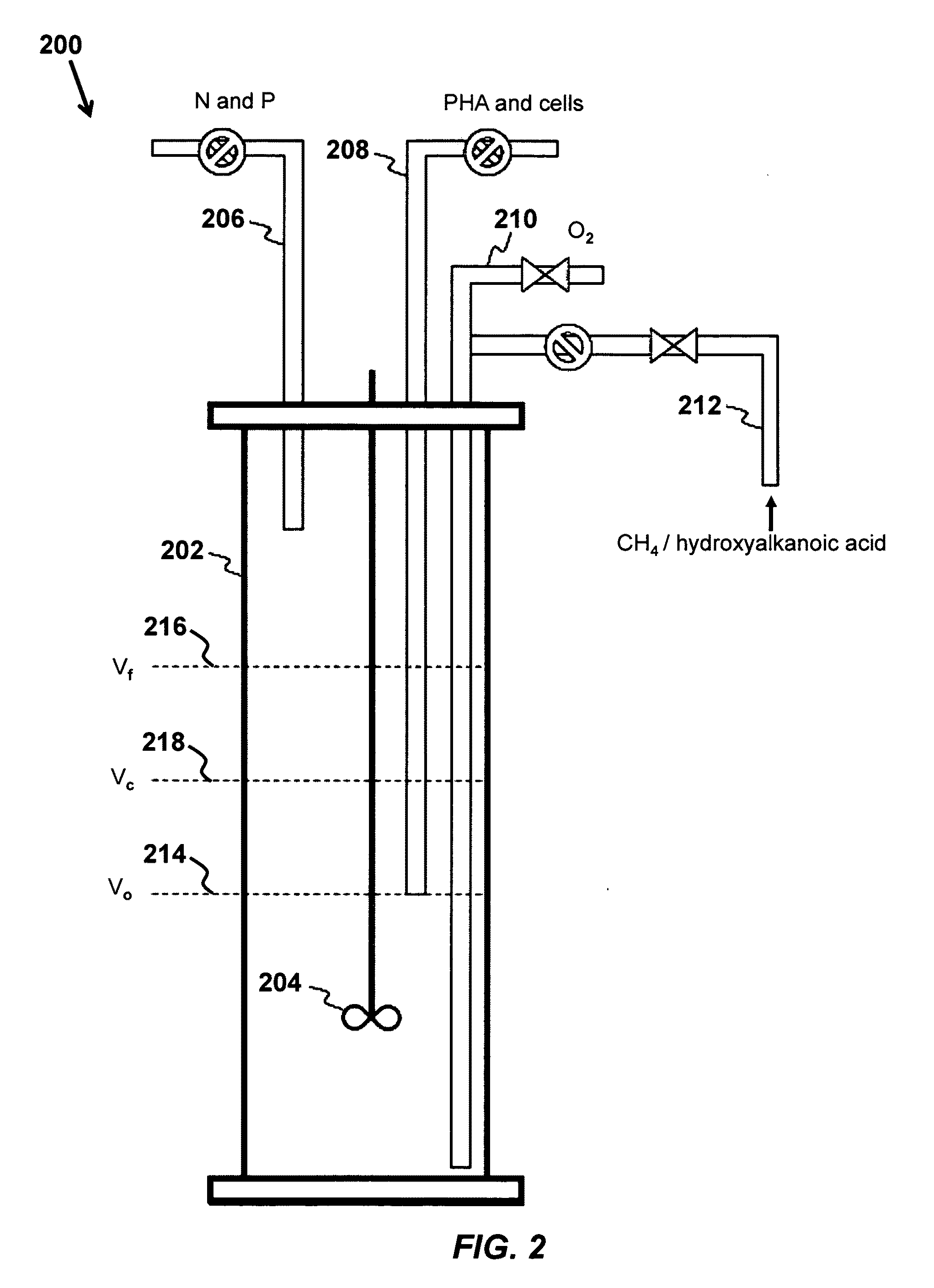Use of hydroxyalkanoic acids as substrates for production of poly-hydroxyalkanoates by methane-oxidizing bacteria
a technology of hydroxyalkanoic acid and methane oxidizing bacteria, which is applied in the direction of fertilization, etc., can solve the problems of phb-producing potential of most methanotrophic species, currently exceeding the price needed, and largely unexplored
- Summary
- Abstract
- Description
- Claims
- Application Information
AI Technical Summary
Benefits of technology
Problems solved by technology
Method used
Image
Examples
Embodiment Construction
[0028]The current invention is a method of biosynthesis of polyhydroxyalkanoates (PHA) that includes providing one or more species of type II methanotrophic bacteria, and disposing the type II methanotrophic bacteria in an unbalanced growth condition, where the unbalanced growth condition includes a nutrient-deficient media and a hydroxyalkanoic acid, and where the nutrient-deficient media has an absence of an essential nutrient required for cell replication of the type II methanotrophic bacteria. In one embodiment, the feedstock is hydroxyalkanoic acids alone or in combination with methane.
[0029]In one aspect of the invention, the polyhydroxyalkanoates can include 4-hydroxybutryate (4-HB), 4-hydroxyvalerate (4-HV), or 3-hydroxyoctanoate)3-HO).
[0030]The invention includes the direct use of hydroxyalkanoic acids as substrates for PHA production, thus bypassing the need for methane conversion into hydroxyalkanoates. These hydroxyalkanoates can be produced via the depolymerization of w...
PUM
 Login to View More
Login to View More Abstract
Description
Claims
Application Information
 Login to View More
Login to View More - R&D
- Intellectual Property
- Life Sciences
- Materials
- Tech Scout
- Unparalleled Data Quality
- Higher Quality Content
- 60% Fewer Hallucinations
Browse by: Latest US Patents, China's latest patents, Technical Efficacy Thesaurus, Application Domain, Technology Topic, Popular Technical Reports.
© 2025 PatSnap. All rights reserved.Legal|Privacy policy|Modern Slavery Act Transparency Statement|Sitemap|About US| Contact US: help@patsnap.com



